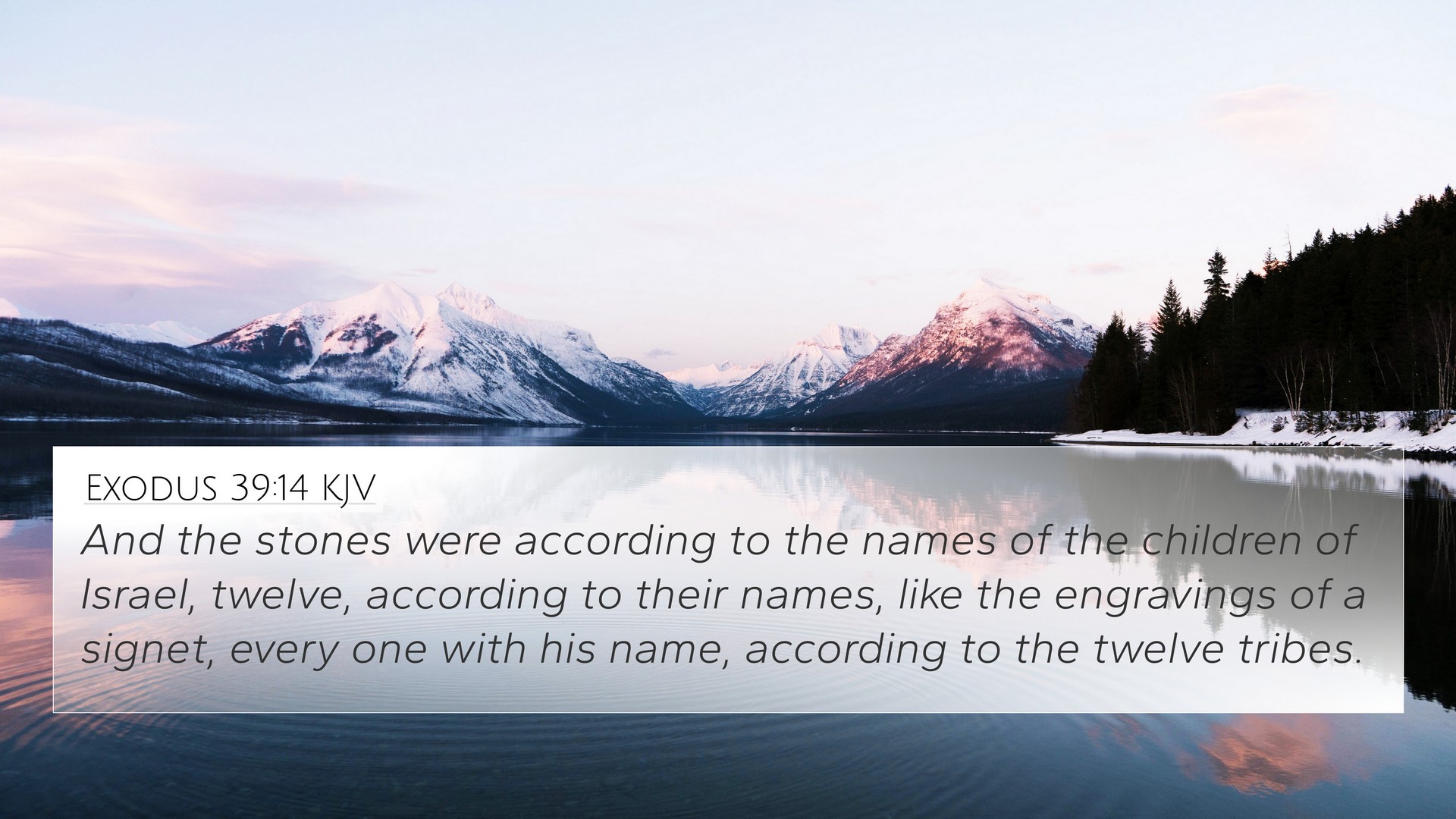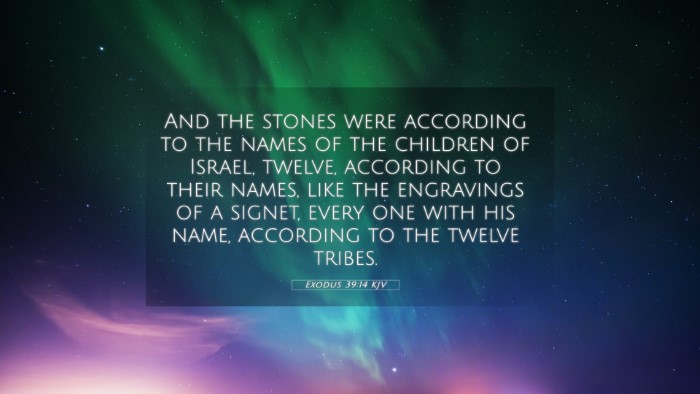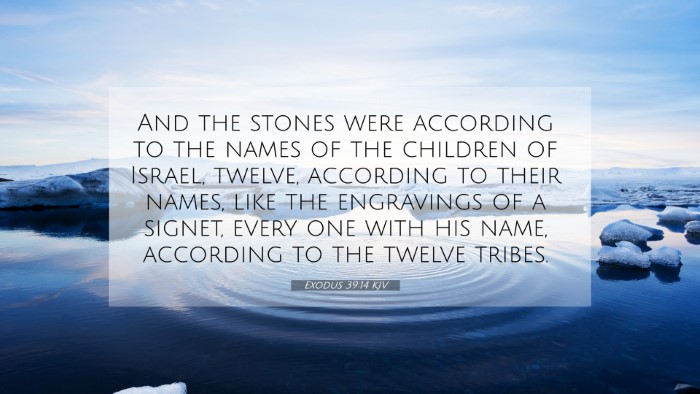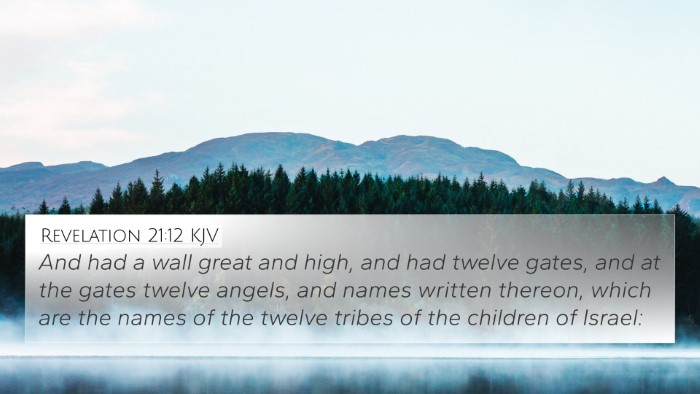Understanding Exodus 39:14
Exodus 39:14 states: "And the stones were according to the names of the children of Israel, twelve, according to their names, like the engravings of a signet, every one with his name, according to the twelve tribes." This verse describes the details of the high priest's breastplate, specifically how it was adorned with twelve stones, each representing one of the tribes of Israel.
Summary of Insights
- Matthew Henry's Commentary: Henry emphasizes the importance of the high priest's breastplate as a symbol of the connection between God and His people. Each stone not only represents a tribe but also signifies God's care and remembrance of them. The engravings serve as a reminder of God's covenant with Israel, highlighting His personal relationship with each tribe.
- Albert Barnes' Notes: Barnes elaborates on the significance of the stones, noting that their arrangement is thoughtful and deliberate. The breastplate, worn by the high priest, symbolizes the representation of the entire nation before God. Each name being engraved like a signet points to the importance and permanence of God's promises to His people.
- Adam Clarke's Commentary: Clarke focuses on the craftsmanship involved in making the breastplate, noting its beauty and meticulous design. He interprets the stones as representing the mystical aspect of Israel's identity and their unique relationship with the deity, where each tribe is acknowledged and honored before God.
Bible Verse Cross-References:
- Exodus 28:21: Discusses the twelve stones on the breastplate, providing the foundational context for Exodus 39:14.
- Revelation 21:14: Mentions the twelve foundations of the New Jerusalem, each adorned with precious stones bearing the names of the apostles, drawing a parallel between the Old and New Testament's emphasis on the significance of names and representation.
- Matthew 10:2-4: Lists the apostles and connects to the tribes of Israel, emphasizing the continuity of God's people from the Old Covenant to the New Covenant.
- 1 Peter 2:9: Describes believers as a chosen generation, linking the identity of Israel with the church, showing how God’s people are represented through different covenants.
- Isaiah 49:16: States that the names of Israel are engraved on God's hands, reinforcing the theme of divine remembrance and personal connection.
- Romans 11:1-2: Discusses God's faithfulness to His people, underscoring that He has not rejected His people whom He foreknew.
- Hebrews 9:12-14: Highlights the superior ministry of Christ as our high priest, emphasizing that Jesus fulfills the role that the high priest and the breastplate symbolized.
Connections Between Bible Verses
This verse draws connections between the old covenant represented in the physical stones and the new covenant embodied in Christ, illustrating a thematic linkage of representation and fidelity. The engraving of names as a signet showcases the importance of identity, both for the tribes of Israel and the believers today.
Theological Themes
- Representation: The high priest serves as a mediator, symbolizing how Christ mediates for believers today.
- Identity: Just as the stones hold the names of the tribes, believers today are called by God and bear His name in their lives.
- Covenant: The ongoing theme of God’s promises is found throughout the Bible, linking the Old and New Testaments.
Practical Application
Understanding Exodus 39:14 can empower individuals in their faith journey, highlighting their importance in God's plan. Just as the tribes were represented, believers today are reminded that they too are part of a larger community in Christ, characterized by God's love and remembrance.
Tools for Bible Cross-Referencing
- Bible Concordance: A key resource for finding specific verses and their relationships.
- Cross-Reference Bible Study Guides: Essential for guiding deeper analysis on how verses connect.
- Bible Chain References: Tools that illustrate thematic links across scriptures.
Conclusion
Exodus 39:14 is a rich verse that encapsulates themes of identity, representation, and divine connection through the symbolism of the high priest's breastplate. Through cross-referencing and comparative analysis, believers can appreciate the interwoven narratives of the Bible and their significance in understanding God's word and their own faith.



